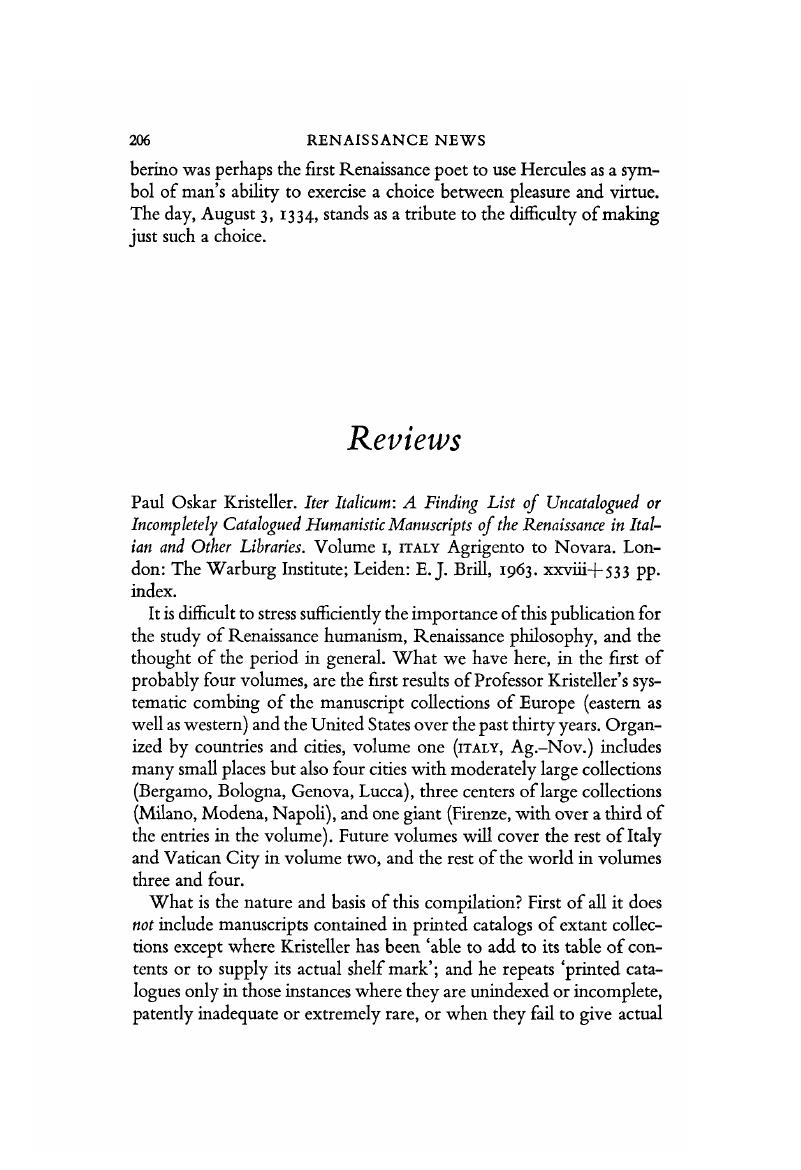No CrossRef data available.
Article contents
Paul Oskar Kristeller. Iter Italicum: A Finding List of Uncatalogued or Incompletely Catalogued Humanistic Manuscripts of the Renaissance in Italian and Other Libraries. Volume 1, Italy Agrigento to Novara. London: The Warburg Institute; Leiden: E.J. Brill, 1963. xxviii+533 pp. index.
Review products
Published online by Cambridge University Press: 20 November 2018
Abstract

- Type
- Reviews
- Information
- Copyright
- Copyright © Renaissance Society of America 1964
References
1 For example, a problem arose when I tried to follow Kristeller's indications of shelf marks for some manuscripts from certain Serie of the Fondo Palatini of the Biblioteca Nazionale in Florence this past summer. For the Serie Baldovinetti, Capponi, and Panciatichi, Kristeller, on the basis of the Inventario of 1862 and a more recent Repertorio numerico, gives what he calls the actual serial numbers first, followed by what he calls the former shelf marks in parentheses (Iter 1, pp. 145-146, 148-149). When the use of these serial numbers consistently brought the wrong manuscript, investigation revealed the following situation, ready-made for confusion. Except for the Serie Panciatichi, the segnature the library goes by is the number Kristeller gives in parentheses. The first number given by Kristeller for the Serie Baldovinetti and for the Serie Capponi is the library's numero di striscie indicating the order of listing in the Repertorio rather than the segnatura. The two numbers, however, are given in parallel columns in the Repertorio. On the other hand, the Repertorio also gives two columns of numbers for the Serie Panciatichi but labels the first column numero attuale and the second column numero antico. In this case Kristeller's listing is correct. Still another problem exists for the Serie Targioni. Here Kristeller lists the old shelf marks first and puts the numeri di striscie in parentheses in his section of Excerpts (inconsistent with the Serie Baldovinetti and Capponi: Iter I, p . 145). This happens to be correct (or rather the first number is now correct and works), whereas the numeri di striscie by the library's reckoning have no significance in locating a manuscript. However, under his Descriptions Kristeller reverses his procedure and for the two Palatino Targioni manuscripts described he gives the numero di striscie first and then in parentheses ‘(formerly 28)’ and ‘(formerly 53)’ (Iter 1, p. 149).




